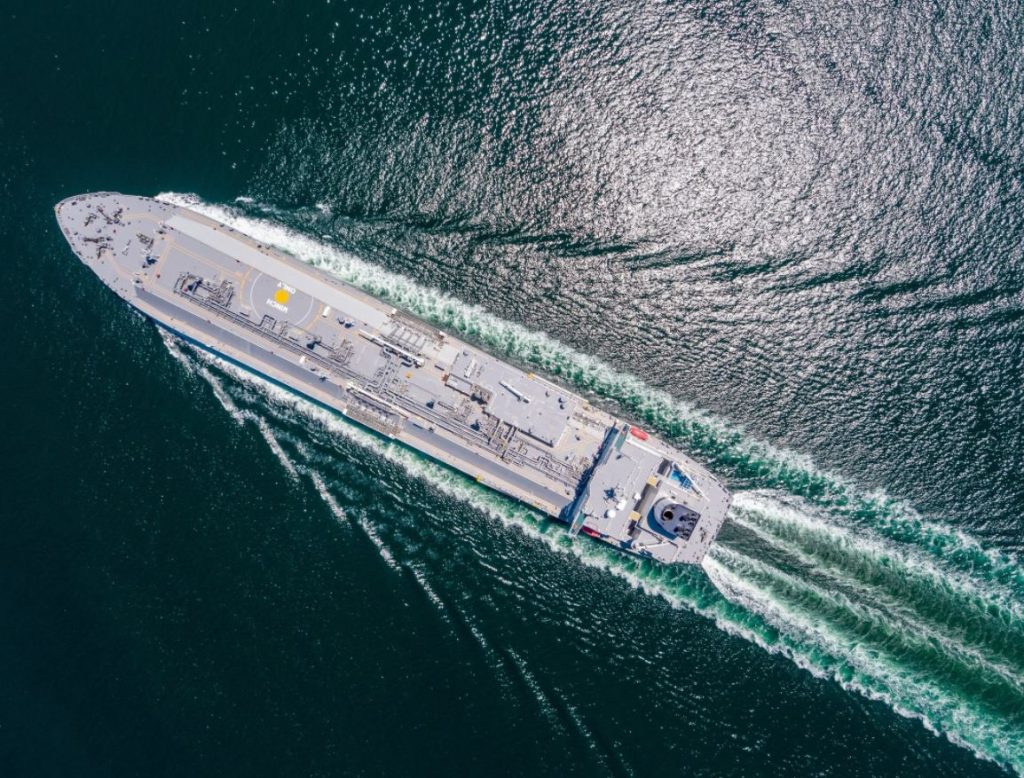This story requires a subscription
This includes a single user license.
From January to July 2024, global LNG imports rose by 0.9 percent (2.07 Mt) year-on-year to 239.30 Mt, Doha-based GECF said in its monthly gas market report.
In July, global LNG imports reached 32.72 Mt, representing a 1.8 percent (0.57 Mt) y-o-y
increase and reversing two consecutive monthly y-o-y declines, it said.
GECF said this is a record high for global LNG imports in July.
The Asia Pacific and MENA regions led the increase, offsetting lower LNG imports in Europe and Latin America & the Caribbean (LAC).
GECF noted that a significant spot LNG price spread between Asia Pacific and Europe pulled more LNG cargoes into the Asia Pacific region.
European LNG imports continue to decrease
GECF said that European LNG imports continued to slide in July, falling by 26 percent (2.28 Mt) y-o-y to 6.34 Mt, the lowest level since September 2021.
The weaker LNG imports in Europe was attributed to lower gas consumption, high gas storage levels, stable pipeline gas imports, and a significant spot LNG price spread between Asia Pacific and Europe.
France, Germany, Greece, Italy, the Netherlands and Spain accounted for the bulk of the decline in the region’s LNG imports.
During the January-July period, Europe’s LNG imports decreased by 21 percent (15.59 Mt) y-o-y to 60.63 Mt.
In France, the decline in LNG imports was driven by lower gas consumption, increased pipeline gas imports from Norway, planned maintenance at the Montoir regasification terminal, and ample gas storage.
Despite an uptick in Germany’s gas consumption, the drop in its LNG imports was attributed to planned maintenance at the Wilhelmshaven regasification terminal and decreased pipeline gas exports to neighboring countries, GECF said.
In Greece and Italy, LNG imports fell in July due to stronger pipeline gas imports from Azerbaijan and Russia.
In the Netherlands, lower gas consumption, higher pipeline gas imports from Norway, and a drop in pipeline gas exports to Germany led to a decline in LNG imports.
Meanwhile, lower gas consumption curbed Spain’s LNG imports.
Furthermore, a price spread of $1.80/MMBtu between spot LNG prices in Europe and Asia Pacific supported the flow of flexible LNG cargoes into Asia Pacific over Europe, GECF said.
Asia Pacific LNG imports jump
In July 2024, LNG imports in the Asia Pacific region jumped by 14 percent (2.80 Mt) y-o-y to 23.40 Mt.
Heatwaves across several Asian countries boosted the region’s LNG imports, GECF said.
At a country level, India, Indonesia, Japan, South Korea, Taiwan and Thailand drove the increase in LNG imports.
Between January and July 2024, Asia Pacific’s LNG imports stood at 164.51 Mt, representing a growth of 11 percent (15.81 Mt).
India, Japan, and South Korea experienced significant heatwaves in July, which boosted gas consumption in the electricity sector for cooling, GECF said.
This, in turn, led to stronger LNG imports in these countries.
In Indonesia, stronger gas consumption supported the rise in LNG imports, particularly from Australia and the US, and higher intra-country trade.
An increase in gas consumption in the electricity sector, due to lower nuclear availability following the retirement of the Maanshan 1 nuclear facility in July, fueled the growth in Taiwan’s LNG imports, GECF said.
Furthermore, stronger gas consumption and lower pipeline gas imports from Myanmar continued to drive the increase in Thailand’s LNG imports, it said.
Latin America and MENA
GECF said that LNG imports in the LAC region fell by 23 percent (0.37 Mt) y-o-y to 1.24 Mt,
which is the lowest level for the month of July since 2020.
Argentina and Jamaica recorded significant declines in LNG imports.
During the period January to July 2024, LNG imports in the LAC region was up marginally by 2.7 percent (0.20 Mt) y-o-y to reach 7.68 Mt.
Despite increased gas consumption for heating due to colder-than-usual weather, stronger domestic gas production and recent pipeline gas supply agreements with Bolivia and Chile curbed Argentina’s LNG imports, GECF said.
In Jamaica, disruptions in LNG deliveries and damage to electricity infrastructure caused by Hurricane Beryl in July, along with the drop in LNG reloads to Puerto Rico, led to a decline in LNG imports, GECF said.
In July 2024, LNG imports in the MENA region surged by 46 percent (0.53 Mt) y-o-y to 1.67 Mt, marking the highest monthly imports since July 2018, GECF said.
This increase was primarily driven by Egypt, which resumed LNG imports for the first time since 2018 to compensate for a shortfall in domestic gas availability, GECF said.
Additionally, Egypt is utilizing the Aqaba LNG import terminal in Jordan to meet its gas demand.
From January to July 2024, the MENA region’s LNG imports rose sharply by 39 percent (1.55 Mt) y-o-y to 5.49 Mt, GECF said.
LNG exports up 1.1 percent
According to GECF, global LNG exports increased marginally by 1.1 percent (0.36 Mt) y-o-y to 33.36 Mt.
This growth was supported by higher exports from non-GECF countries and an uptick in LNG re-exports, which offset lower exports from GECF member countries, it said.
Non-GECF countries maintained their dominance in global LNG exports with a market share of 53 percent, up from 52.8 percent in July 2023.
The market share of LNG re-exports also increased from 0.6 percent to 1.2 percent during the same period, while GECF’s market share declined slightly from 46.6 percent to 45.8 percent.
Between January and July 2024, global LNG exports reached 239.41 Mt, representing
an increase of 1.1 percent (2.63 Mt) y-o-y, GECF said.
The US, Qatar, and Australia were the top three LNG exporters globally in July 2024, GECF said.

